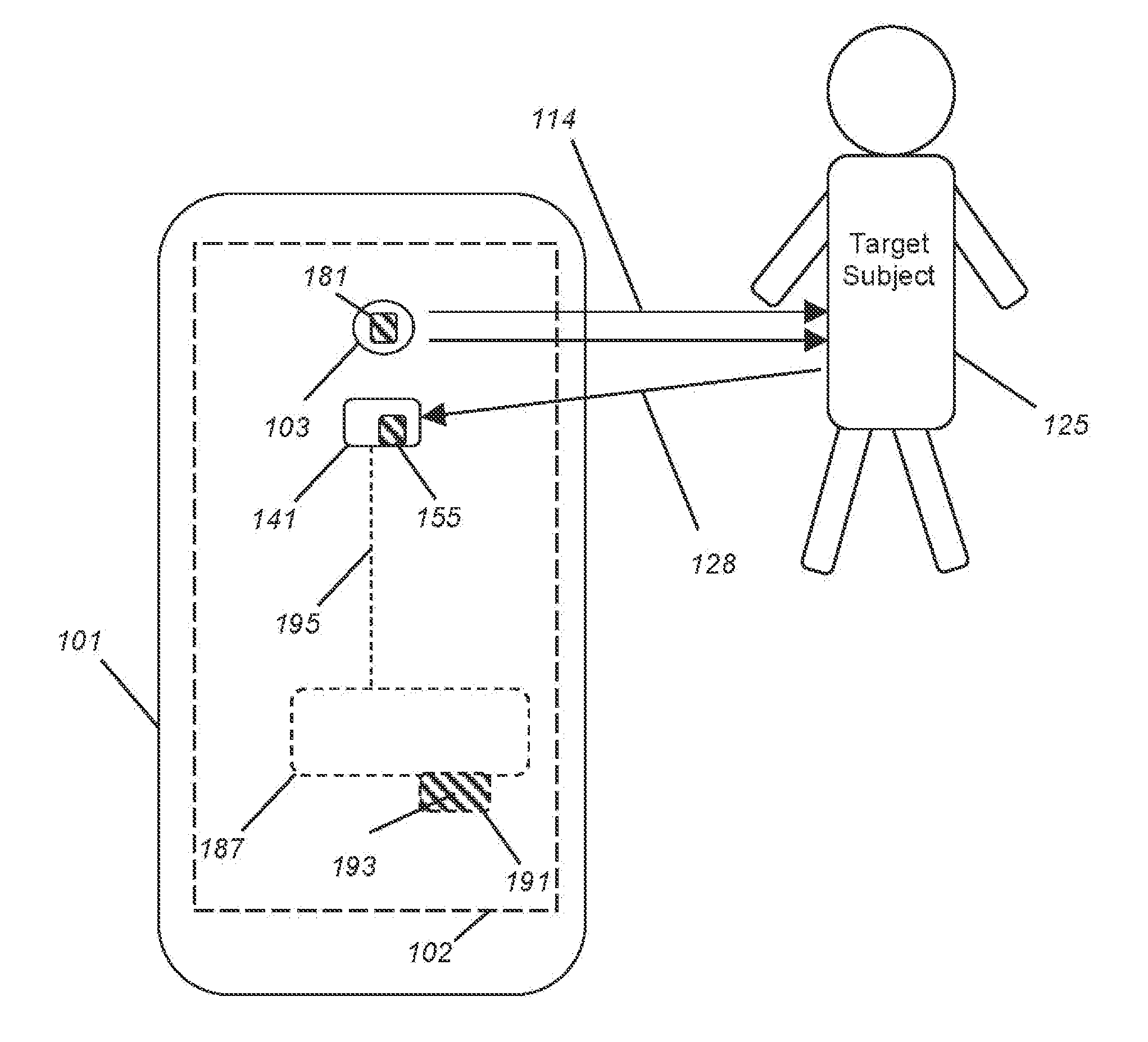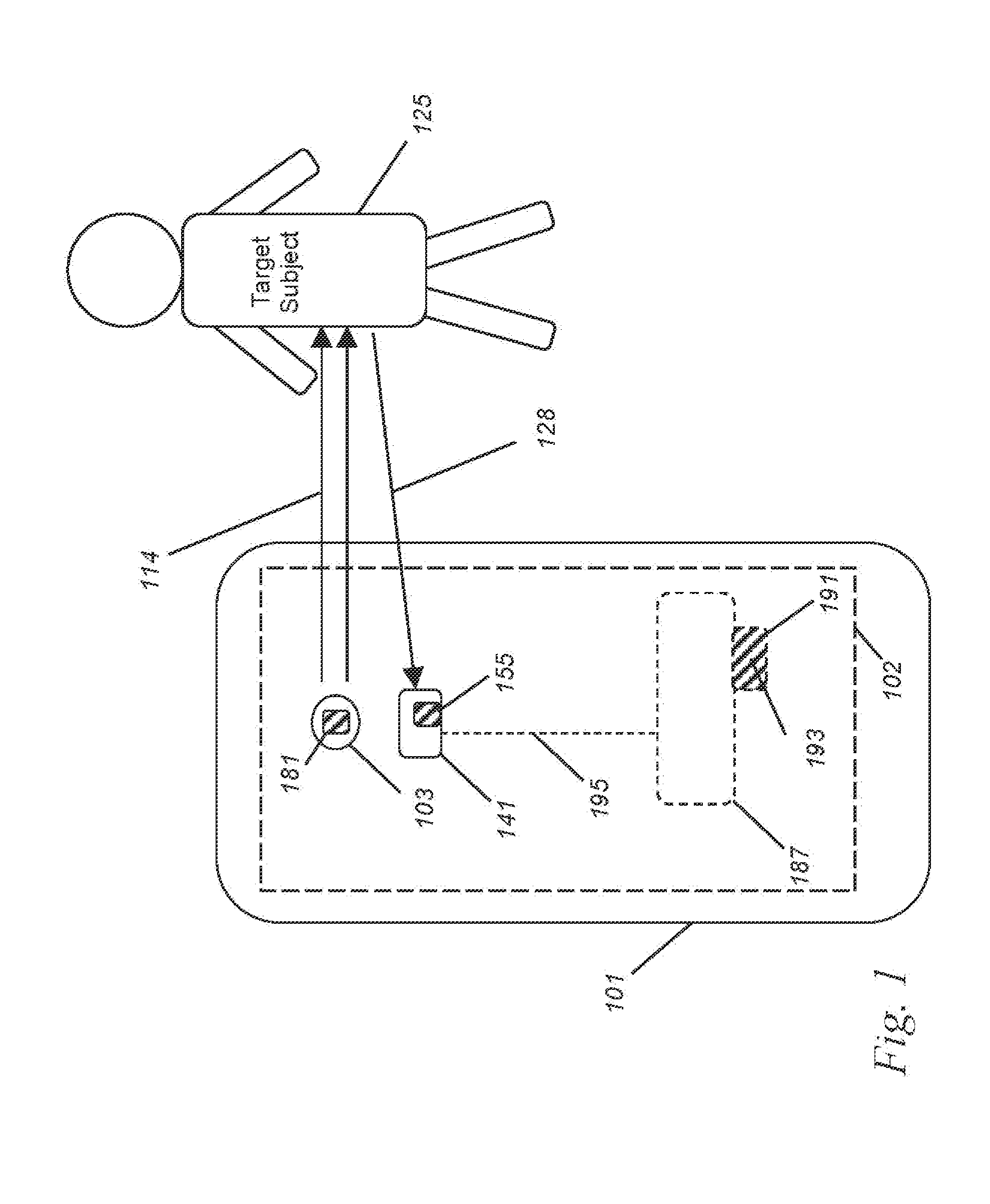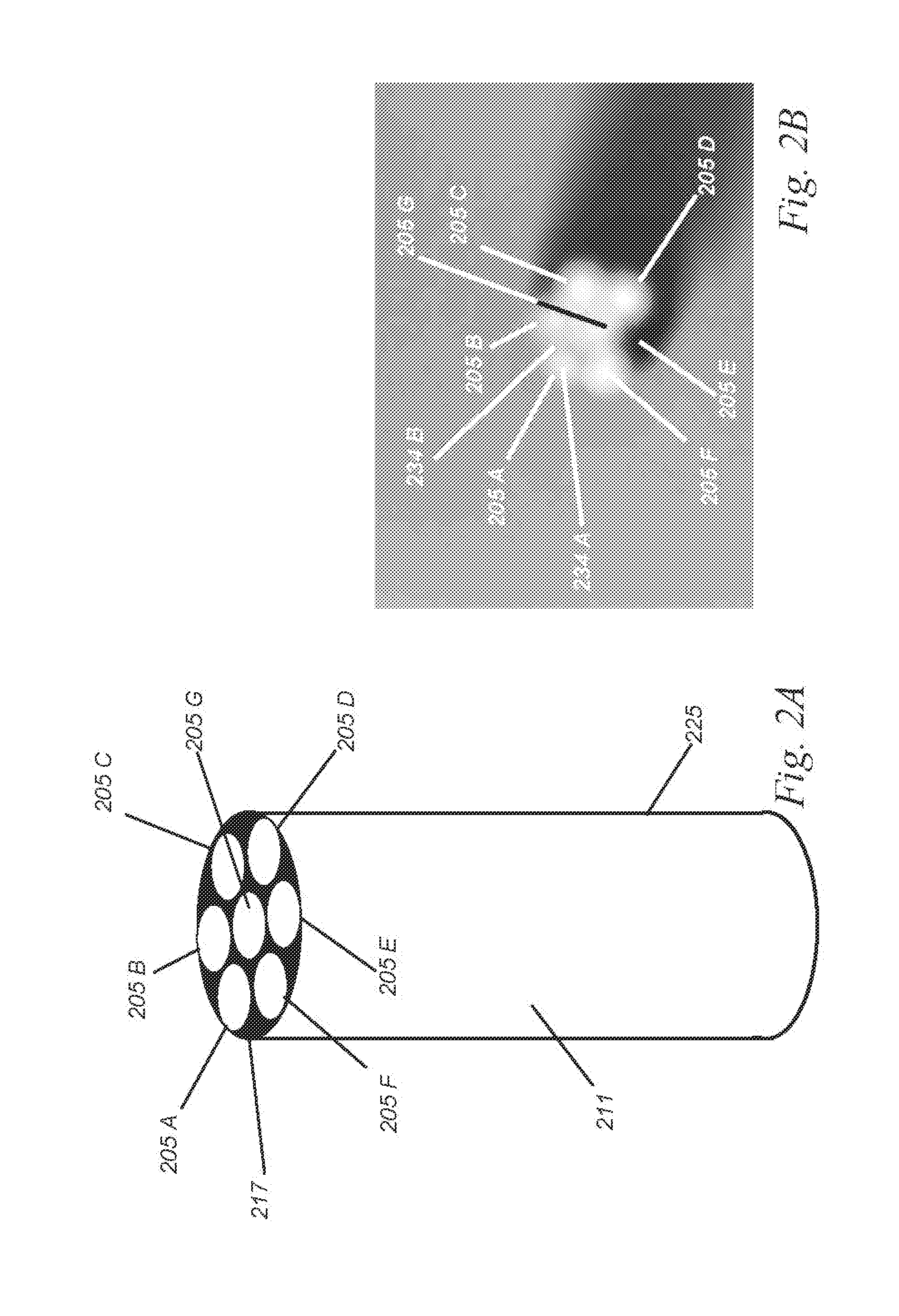Respiratory Monitoring Sensor And Method For Cell Phones, Smart Watches, Occupancy Sensors, And Wearables
a technology of respiratory monitoring and wearable devices, applied in the field of respiratory monitoring wearable devices, can solve the problems of inconvenient operation, inconvenient use, and inability to adjust the chest strap while running, and achieve the effect of simple and inexpensive implementation
- Summary
- Abstract
- Description
- Claims
- Application Information
AI Technical Summary
Benefits of technology
Problems solved by technology
Method used
Image
Examples
example 1
Non-Contact Heart Rate Determination
[0118]In this example, illuminator 103 is a white LED embedded into a Samsung Galaxy S3 smartphone. Software app 172 is a custom software loaded into a machine-readable physical memory (4 Gb microSD card, San Disk) placed into the external SD card slot of the Galaxy phone, and installed using the Android operating system (Android 4.4, Google) on the phone. The app is launched using the Android touch interface. Multiple filters allowed multiple bands wavelength bands to be collected.
[0119]Upon launch, Software app 172 turns on illuminator 103, as well as displays a camera image from detector 141, which shows a hand placed into the image sensor view, but not necessarily in contact with the sensor. A pixel region corresponding to sensor intensity averaged over 100 pixels for each of these spectral ranges every 300 milliseconds is captured.
[0120]After capturing a spectral channel, the intensity is processed for change over time (a differential plot of...
example 2
Content Aware Detection
[0141]As an example of content awareness, one use of the detection of these features is the ability to detect tissue.
[0142]Conventional proximity detection involves either an intensity measure that changes as tissue moves closer or farther away, or uses a distance monitoring method to detect the distance from the sensor to the nearest object. Both of these approaches have problems. Both of these methods would view a piece of paper moving closer as the same as a face moving closer. That is, they are neither content-aware nor bio-aware.
[0143]In a study performed with human volunteers, a hand was moved over a sensor constructed in accordance with the present invention. The presence of hemoglobin at a tissue saturation level expected in human subjects was used as a measure of the presence of living tissue, and the observed intensity of the signal was plotted as a proximity signal. Also calculated was a pure intensity only signal, which is the standard proximity si...
example 3
Heart Performance from a Bracelet Monitoring Device
[0154]In this example, a bracelet was constructed using a white LED light and an optical fiber. The optical fiber allowed for ease of construction, in that a silicon sensor did not need to be incorporated into the small wristband. Rather, the light was transferred from the optical fiber to a commercial spectrally resolved linear sensor and measurement system (T-Stat 303, Spectros Corp, Portola Valley, Calif.) operating in a data-recording mode. This device is a commercial system incorporating a spectrophotometer (Ocean Optics SD-2000+, Dunedin, Fla., USA) to measure light entering the system. Data is recorded on an internal disk, then exported to a USB solid-state drive for storage and analysis, in this case in excel on a laptop computer.
[0155]A fit subject was exercised on an elliptical trainer. The power of the workout (joules / hour), the subject's heart rate, respiratory rate, work power, and pulse oximeter reading were recorded u...
PUM
 Login to View More
Login to View More Abstract
Description
Claims
Application Information
 Login to View More
Login to View More - R&D
- Intellectual Property
- Life Sciences
- Materials
- Tech Scout
- Unparalleled Data Quality
- Higher Quality Content
- 60% Fewer Hallucinations
Browse by: Latest US Patents, China's latest patents, Technical Efficacy Thesaurus, Application Domain, Technology Topic, Popular Technical Reports.
© 2025 PatSnap. All rights reserved.Legal|Privacy policy|Modern Slavery Act Transparency Statement|Sitemap|About US| Contact US: help@patsnap.com



